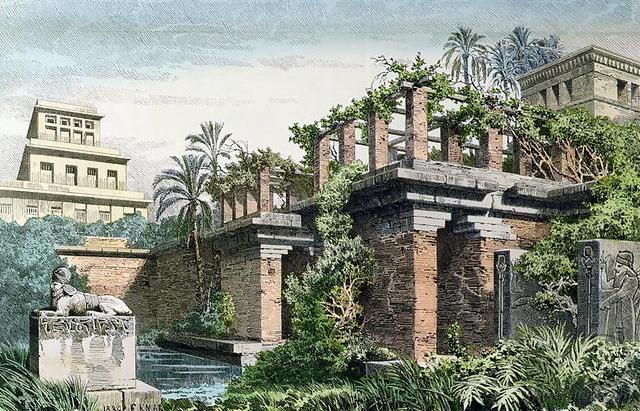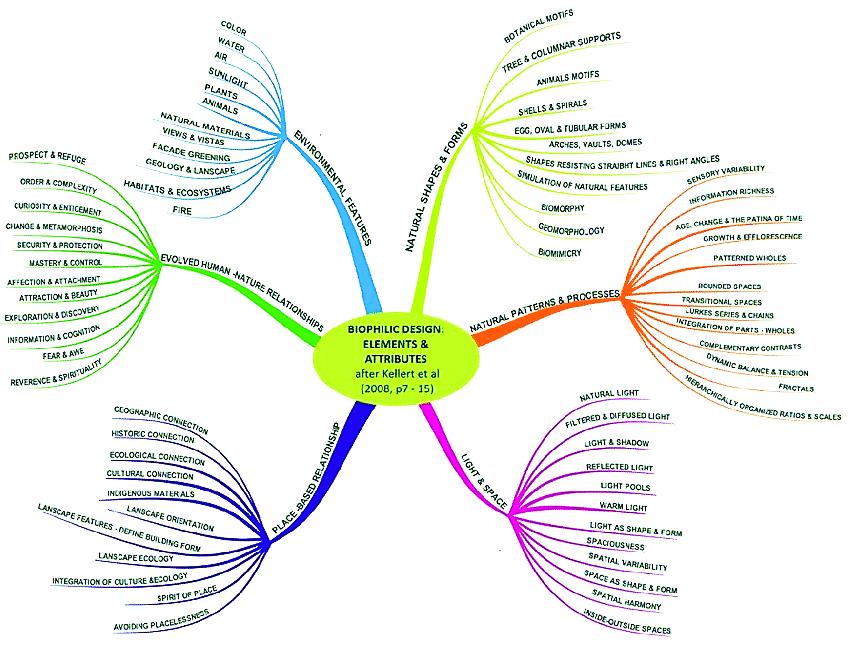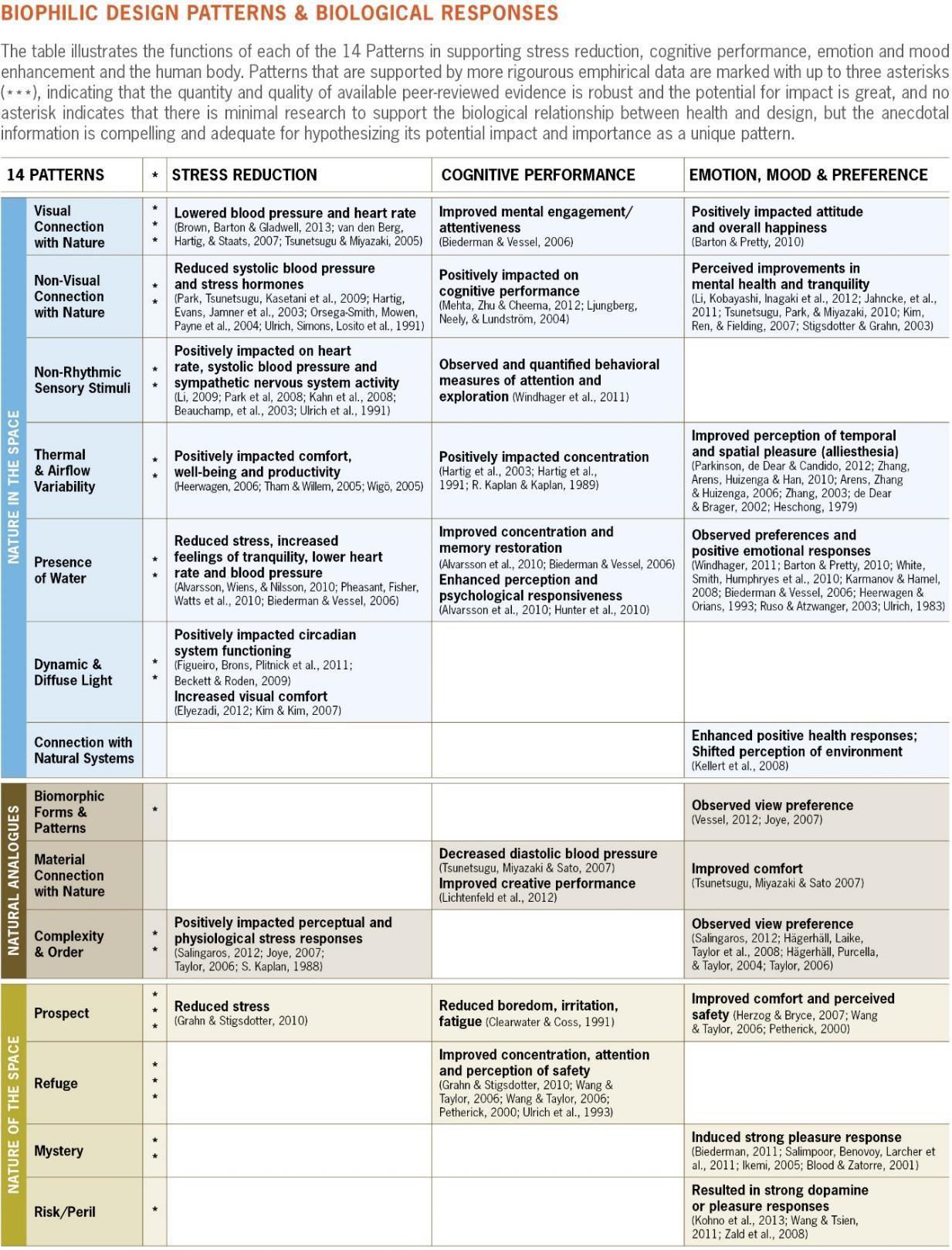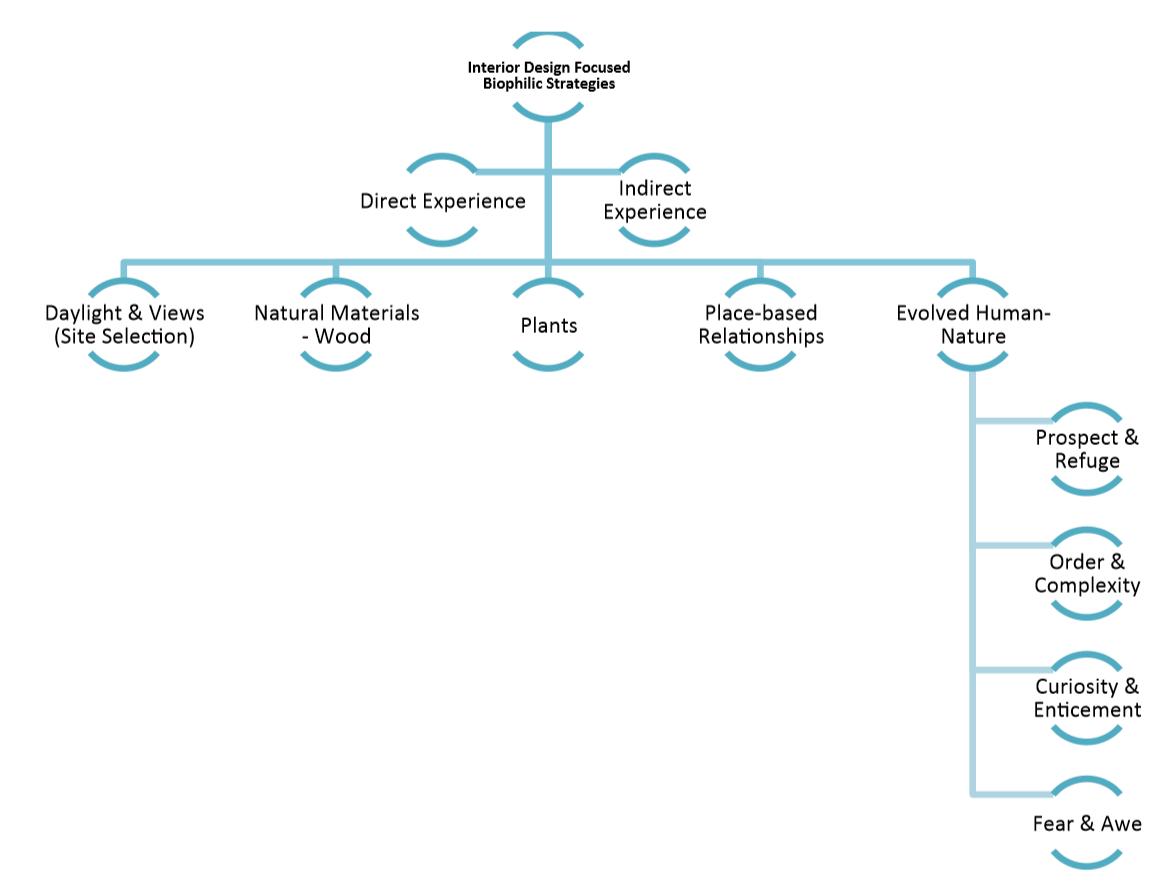
6 minute read
Chapter 2: Literature study
Biophilia is a 'love of nature' or 'living system'.
"The innate tendency [in human being] to focus on nature and natural processes"
Advertisement
. (E.O. Wilson)
Biophilic Design is about creating good habitat for people as a biological organism in the modern building and construction that advance people health. Good habitat means ecologically sound and productive settings where people function to their optimal potential.
(Dr. Stephen Kellert)
2.1 Biophilia and Biophilic Design
Biophilia proponents say that the combination of nature into the workplace can serve to alleviate the reaction to human pressure and help improve fitness, memory and attention. The following section provides an overview of biophilia and new theories of nature-based functionality, stress reduction, and literature-based biophilic development.
2.1.1 History of Biophilia and Biophilic Design
In 1973 (Britannica) the term biophilia was first used by Erich Fromm and later developed by Edward. O. Wilson. Wilson defined biophilia as nature's innate need and attachment. There's no new concept of biophilia. Human beings have been inhabiting in and with nature for most of our evolutionary time on earth. Our ties to nature suggest that humans have evolved on the savannahs, so we have a genetic memory to prefer similar places. Although its name has been coined in recent history, architecture has seen indicators of biophilic design from as far back as Babylon's Hanging Gardens.
The stress response is in our biology, as research suggests the restorative properties and associated health benefits of nature-based attributes such as the specific biophilic interactions of forests, plants and views in reducing tension. Biophilia's potential role as a health benefit or healing source is also not new. Although the
Figure 1 The Hanging Gardens of Babylon, painting by Ferdinand Knab. (Cartwright, 2019)
term biophilia was not introduced until 1973, and the term biophilic design, the translation of biophilia to the built environment was not introduced until 2008, historically nature and biophilia have been a part of daily living and even healing practices for centuries.
Nature has been an important part of daily life; we have only become more isolated from nature over the last few centuries. Many workers migrated from rural areas to cities to seek new employment prospects with the Industrial Revolution onslaught.
From the 1870s onwards, the trend was to move to the "new" suburbs in Britain and the U.S. The shift to suburban living, with its larger gardens, suggests a desire to restore a connection with nature and a reaction to the densely built urban environment. According to Wright, the new suburbs in the United States provided "picturesque site planning and natural building materials" that "reflected a return to nature, lost innocence and earlier stability."
A growing body of design research encourages designers to reintroduce the connection between nature and health care. Due to growing evidence of the benefits, therapeutic gardens have been re-introduced in hospital layout and long-term care facilities over the past two decades. After surgery, biophilic work in health care settings shows reduced recovery times, better pain management and anxiety. The Planetree model is a good example of the nature-related healthcare environment design. A patient Angela Thierotdeveloped the Planetree model in California in the early 1980s, named after the Hippocrates tree, taught his students below. In the Planetree model, the hospital experience is refocused on the patient including: unrestricted visiting hours, welcoming family members, including children at all hours, encouraging family members to cook, to stay overnight, but also create a more homelike environment including plants, fish tanks and connecting to the outdoors through views and gardens. The Planetree model “brought nature and gardens back into focus as important elements of a healing environment and a healthy workplace”.
Healing and therapeutic gardens have been planned for patients and their families, but based on the evidence provided so far, as researchers have found health benefits from gardens in hospital settings, the same benefits could also be recognized for employees in office settings.
2.1.2 Environmental psychology and biophilic design theory
There are two key psychological theories on nature’s ability for restoration.
1. Attention Restoration Theory (ART) and Psycho-Evolutionary Theory-The two psychological theories that provide historical research on restorative settings are Attention Restoration Theory (ART) and Psycho-Evolutionary Theory. ART and psycho-evolutionary theory provide a potential explanation of why nature is regenerative. All place emphasis on nature, specifically trees, water, and other natural resources to encourage regeneration based on evolutionary assumptions.

Figure 2 (The prefrontal cortex controls executive functions such as attention, regulation of behaviour and our emotional responses, 2019)
2. Kellert's biophilic design and characteristics of survival-advantage-Theorist and research scholar
Stephen Kellert translated biophilia, ART, and psycho-evolutionary theory into a biophilic design framework (see Figure 3). The biophilic design principles of Kellert, consisting of two dimensions, six elements and 70 attributes, provide guidance in applying biophilia theory to the design of the built environment.

Figure 3 Dimensions elements and attributes of biophilic design (Sayuti, 2019)
In the relationship between the built environment and nature, Kellert's work provides an important pioneering theory. The work of Kellert is only a theoretical framework, not a strategy or application of design. His frame has two dimensions that are based on organic and location. The organic aspect is "described as forms and shapes representing the inherent human affinity to nature in the built environment." The organic dimension is broken down into:
1. Direct experience refers to contact with a natural environment such as daylight, plants, and animals. This type of natural environment is one nature that can survive without human input. 2. Indirect experience requires the natural element to have “ongoing human input” for the element to survive such as potted plants or interior gardens that require human input to survive i.e. watering, heat, fertilization.
3. The symbolic experience involves no contact with real nature, but only the representation of nature through images or symbols

Figure 4 Kellert’s Biophilic Principles, elements and attributes.( Teimrra Epviann bsroignh /t Fglircekern,2019)
2.1.3 Focusing on four of Kellert’s Biophilic Elements
Based on the literature review, four attributes appear to provide the most potential impact on stress reduction in the design of the workplace for employees.
1. Environmental features 2. Light and space 3. Place-based relationship 4. Evolved human-nature relationship These elements focus on being exposed to nature, either directly or indirectly.
“Environmental features” includes attributes involving direct contact such as sunlight (or natural light), plants, natural materials, views and vistas and will briefly touch on-air (operable windows) and animals.
“Light and space” focuses on the qualities of light and spatial relationships. The research and case studies will focus on natural light which will be tied into views and vistas noted above.
“Place-based relationships” reflect and combine the culture and geography to fulfil “locational familiarity –the yearning for home -remains a deeply held need for most people.” This element consists of eleven attributes: geographic connection to place, historic context to place, ecological relation to place, a cultural connection to place, indigenous materials, landscape orientation, landscapes that define building form, landscape ecology, a combination of culture and ecology, spirit of a place and finally avoiding placelessness.
“Evolved human-nature relationships” attributes focus on the “underlying aspects of the inherent human relationship with nature”: order and complexity, curiosity and enticement, prospect and refuge, and fear and awe.
Figure 5 Interior design focused biophilic strategies.(Callaghan, 2019)






